by guest blogger Georgianne Holland
Some thoughts on the profound changes in the handmade industry over the past few decades, and how artists can communicate the value of their work.
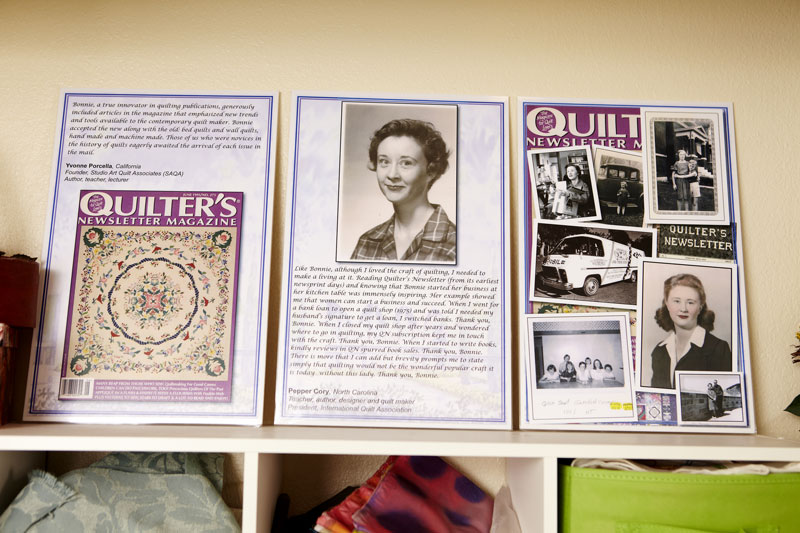
The Quilters Newsletter Magazine, with photo of Founder Bonnie Leman
The concept of fine craft, as well as fine art, I think we can all agree, include words like excellence, standards, and quality. When I hear of a master-crafted item, I think about something out of the ordinary or beyond the usual. I think of an object that inspires awe.
My background in American-made craft began in the mid-1970s. I was part of the team that published Quilter’s Newsletter Magazine in Colorado. Much of my workday saw me helping people focus their love of sewing and playing with color into either a serious hobby or a legitimate profession in the quilting arts. The flourishing quilt industry of the 70’s was yet another cycle of the growing love affair Americans have had with handmade. These soft goods for the home were, if not master-crafted, were at least laboriously made with great love and attention to detail.
My mom, Bonnie Leman, was the founding editor of Quilter’s Newsletter Magazine. She helped her readers improve their quilt making skills, and encouraged them to seek out that awe-inspiring result. She also invested heavily in helping them believe in the value of their handmade fiber arts.
This resurgence of improving excellence across an ever-growing body of quilt makers in America was in full swing. Then big-box stores like Sears began importing bed quilts from China. I observed that anyone who had ever attempted to create a quilt knew that these quilts were not inspiring, they were heartbreaking. It was a commercially-driven attempt to profit on the growing demand for quilts in American homes. And the value proposition of these objects as an art form was trashed, at least temporarily.
It was interesting to observe that the women in this industry, who had spent the past 10-15 years helping one another grow in their expertise as fiber artists, were put in the position of belittling the quilt-making efforts of other women in China.
My own value system was challenged by this “us vs. them” mentality. I also observed that the glut of these cheaply made quilts made an economic impact on professional American fiber artists. And it affected specialty fabrics stores and entrepreneurs across the United States. In fact, I suggest that the fiber arts in America as a broad class of industry are still recovering.
Now that the internet has so drastically changed the way that people shop, imports into our neighboring stores is only one part of the supply chain. Professional fiber artists in every country have had to learn how to promote the value of what they make to the entire world.
What can artists and craftspeople do to both build value and express the value of what they love to make?
- Concentrate on the absolute value of your creation. For professional fiber artists, that includes quality materials, expert finishing techniques, and professional-quality photos. We sell not only an object, but we sell how that object makes our customers feel.
- Recognize both your expertise and your vulnerabilities. Speak to yourself in terms of valuing your artistic life. Treat yourself with respect at all times. Additionally, reach out to others. We can be the support other artists need on any given day. This can take the form of emotional support, being a collector of their work, and as a supporter of the arts.
- Balance competitive energies with consensus-building. When I market my fiber folk art, I have to both remember and forget that I do not compete with the soft goods sold at Target. I am aware that my customers have a wide variety of choices, so they will likely know about the $9 pillows at Target, but my ideal customer is not interested in filling her home with cheap imports. Instead of thinking about competing on price, I build consensus and community as part of my marketing efforts. I proudly express the quality of what I make and I seek to have that message resonate with my “just-right” audience.
- Use the power of the Internet to express the benefits of supporting wholesome, handmade fine craft, in America and beyond! This effort helps the individual artist as well as it helps the entire arts community. We can work together to create awe-inspiring results, and this adds to the healthy future of our beloved creativity!
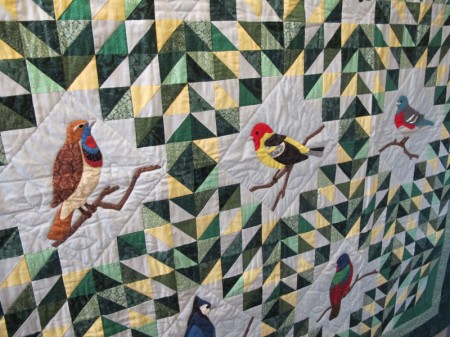
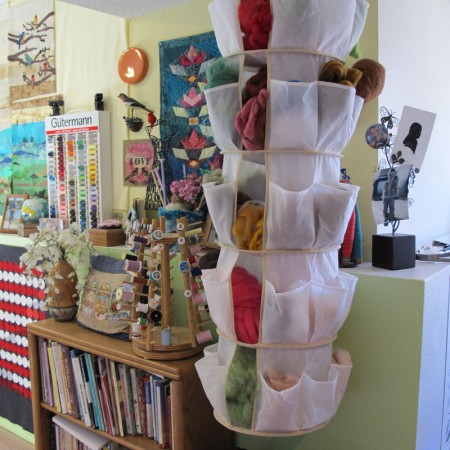
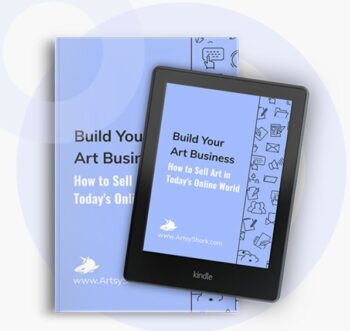
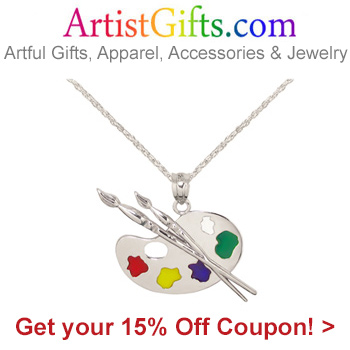
I’ve watched Georgianne give her business a facelift in this past year and have learned a lot from her process. She is a member of our textile group, TAFA: The Textile and Fiber Art List and always has a word of encouragement and a sunshine smile. It takes work to engage with the community at large, but it is through that interaction that she finds her special, niche market.
It’s also a tremendous amount of work to really understand what the relationship between maker and buyer is and how that can be built as a business. Georgianne has been able to zoom in on core products that fulfill her artistic sensibilities and yet are defined well enough to keep customers from confusion. They can co-create with her and be sure of owning something that is both original and which will fit into their own aesthetic tastes. It took Georgianne a lot of soul searching, planning, reaching out, getting technical assistance and long term planning to fine tune her presentation and the results are wonderful. I am so proud of her and wish her continued success as she moves forward, receiving full value and recognition for her work!
Thank you so much Rachel for your kind words! I have counted you among the most influential of co-creators as I endeavor to build my Nestle And Soar studio online! It is fortunate for me that the kindness of strangers has begun so many of the most enduring friendships in my life. While you and I have not met in person, we are sisters in this fiber art community, and I am blessed.
If you are a fiber artist or a lover of fiber art, I wholeheartedly recommend Rachel’s online community, http://www.tafalist.com. This is where you will find the Textile and Fiber Art List, which showcases the work of many talented and generous fiber artists. Enjoy!
Aww, thanks, Georgianne! We are all part of the mutual admiration society, right? I feel so inspired by what all of our members are doing and find Artsy Shark’s business posts valuable. I share them often in our member group. Each of us, I believe, makes this world a bit more beautiful, a bit more humane, and someday, I hope we all meet face to face!
I am Georgiann’s sister-in-law and have admired her tanacity in finding the right venue for her skills, for many, many years. We have gone from fabrics, to foods, and now to the fiber arts. Georgianne definitely has many skills, but think that colors, fibers and self-creativity are uppermost on her gifts list. She has the presence and knowledge to lead, encourage, and support those of us who have not quite attained the level of achievement that she now enjoys!! I always love to see your new creations, and may have to get a com-panion to my Yellow Bird pillow!
You are so sweet Joyce! It is true that, over the past 35 years, you have witnessed my many transformations. Human experience, for all of us, is really a series of trying on roles and passions, and seeing which choice is the most life-affirming. I know that as Americans, this kind of self-determination is a daily option, and I am very grateful. No matter where one lives though, we can give one another confidence by being the strong and supportive person (like Joyce) who bears witness to all the incremental efforts people make in their daily life! That is really the message behind my entire Nestle And Soar philosophy…everyone deserves the chance to both nestle and soar! Thanks again Joyce for your steadfast support. Soar on!
Thank you for writing this and for reminding me that it’s not about competing with Target…it’s about loving what I do and being as good at it as I possibly can. My fellow artists and I have this conversation a lot and we always need reminding.
Thanks Tracey. Don’t you think that being part of a community of artists is key in this life of art? We all help one another remember…
I do! This little group I have with two close friends has been a really helpful tool. Sometimes, of course, it depends upon the group — it can get competitive and/or difficult because there are so many wildly different (and passionate) personalities involved. 😉 Maybe that’s a good topic for a future post!
I have been reading American Craft, a magazine of the American Craft Council. A recent bonus issue has an article expressing the idea that the studio craft movement is in decline and that designing for industry is the future. See their bonus issue online, http://craftcouncil.org/content/american-craft-design-2013, page 118.
I have talked previously about the fact that many articles in the magazine in recent years have seemed to focus on individuals using craft materials, such as ceramics or wood, to make art. Functional goods seem to be discussed in the context of design. I am not against designing for industry, but I love handmade goods and hate to see them disappear.
Also, I love working in hand techniques myself and hate to see the knowledge of those techniques disappear with the handmade items.
Peggy, You are absolutely correct, and your statement that design has taken over the popularity of craft is true. See this article by Garth Clark on the subject. http://art224.files.wordpress.com/2011/09/clark_envy001.pdf
I personally believe that people will always enjoy and want to participate in creating handmade work. Craft traditions need to be preserved, yes. But I also believe that the entire crafts movement is evolving and take a different form. The craft movement in the 70’s, 80’s and 90’s has changed dramatically. You can see what has taken it’s place by reading about the Indie Craft movement which involves a lot of younger artists. I think this is very positive.
Thank you for writing this article, Georgianne. You have succinctly articulated the dilemma facing artists and craftspersons today. I especially appreciate your suggestions at the close of the article. It is important to maintain the value of what we do and how we do it. Thank you!
Thank you Linda for your kind comment. This topic has created a lot of discussion around the web in the past few days. One comment that keeps coming up from fine craft collectors is the growing discomfort they feel about fair trade principles. I have heard about this discomfort as they recognize that the hand made item that has caught their eye is likely created in multiples by people who have no choice about what they are paid or their working circumstances. I sometimes feel helpless when I think about what that is like for the talented makers around the world. Your comment today reminds me that one action step I can take as a crafts person is to maintain the value of what I do and how I do it. I also hope to keep encouraging other independent artists, whether they make one-of-a-kind or multiples, to put value on the real time and talent they invest in each piece. I believe that this honors our fine craft traditions and is respectful to the socially conscious consumer. Thanks again Linda!
Georgianne, I find this discomfort about fair trade principles surprising! What exactly are they uncomfortable with? The foundation of fair trade is built on giving makers a voice, participation and fair earnings for their labor. The products made vary greatly and some might be making production items (as do our artists/crafters) in the US, etc., but others are using techniques and skills handed down through the generations that equal any of our fine art textile makers. I think that the main discomfort towards them is rooted in disguised form of racism, that because many are poor or uneducated, they are perceived as less worthy. The last fifteen years has seen a leveling of the playing field where many fair trade groups have improved designs and can compete equally with makers in developed countries, but there is still a long way to go.
One of the beefs that I have with Etsy is that they do not allow many fair trade groups to be represented by others there. Many of these groups are in remote areas with poor internet connections, don’t have Pay Pal or postal services that they can rely on, so they are not able to sell directly to the public and need third parties to do it for them. I believe that we need to support all efforts towards creating a thriving market for all things that are handmade, whether they are high end, one of a kind products or functional small ticket items. This goes hand-in-hand with other eco and green movements, including agriculture and sustainable product development for commercial purposes. I long for a world where “going green” is the mainstream and where we can all find our niche and be rewarded fairly for it.
The biggest challenge for craft-making and their markets still has to do with currency exchange rates and sweatshops. If there is any discomfort in craft production, it should be aimed at places that use unfair practices, where women and children are even chained to their sewing machines or looms, receive a pittance for their work, and are treated as slaves, We don’t need to look abroad for these practices as they still thrive even here in the US. Then, with the currency rates, this has been changing dramatically as the dollar has fallen in value and as developing countries have seen their economies stabilize. China, for example, has been a major problem for the craft industry, but as their middle class population rises and their costs of materials see less subsidies from their government, their goods will become closer in price to what ours our.
I think that what has happened here will inevitably happen worldwide as industrialization happens: a majority of people will quit making things as they aspire to other professions that are newly accessible to them. Those who continue to make things will increasingly look for ways to maximize profits. The traditional ways will survive with only a few and they will become valued as the master artisans or artists. Most will seek for ways where they can rapidly produce copies of traditional “content” without the process. We see this with Native American work here: a few masters doing things the “old” way, while trinkets and mass produced copies, still handmade, are made for the tourist industry. With time, a new generation becomes interested in reviving the old traditions and dedicate themselves to keep them alive.
I often see a discrepancy between how native artists are treated or recognized, how their work is valued with how urban artists are perceived and valued. I don’t think that everyone who makes something is an artist nor that all artists are good at their craft, but I would like to see credit given where it is deserved. A Mongolian felter who is making their own work using their own designs should have the same designation as a felter in New York or Chicago. A Guatemalan weaver should be treated the same as a New Mexican weaver. And so on…. A world that loses its makers would be a sad one indeed.
I believe that the folks who are expressing discomfort to me in response to this article Rachel are expressing their dismay at the gap between those who make craft of their own volition and those who make craft under sweatshop circumstances. Many collectors want to know the origin of the object, as they value both the object and the maker. I know of no one who is uncomfortable with supporting fair trade artisans. I am a strong supporter of treating all people with respect. Don’t you find that art and craft is often created in rigorous circumstances? I am always inspired by the dedication and detail-orientation of makers! The physicality of creation is beautiful.
Thanks, Georgianne. I was responding to this line that you wrote: “One comment that keeps coming up from fine craft collectors is the growing discomfort they feel about fair trade principles.” Fair trade is worlds apart from sweat shop manufacturing and was created as a reaction against exactly that. The movement began in the 1970’s, actually with coffee producers who wanted direct access to markets so that they could have the profits rather than having middlemen get all of the business. Coffee is a labor intensive product and the laborers were kept out of the negotiating conversation. Fair trade has allowed them to benefit collectively. This then spread to handicraft production, which in many countries is still a bi-product of an agricultural lifestyle, much like those of our ancestors. Carve, weave, spin, embroider, etc. during the waiting periods between sowing, reaping, winter months, etc.
That fair trade should in any way be confused with sweatshops disturbs me as this movement has been around for almost 50 years now. I would think that by now, the concept would be more mainstream than it is, especially among handmade circles. For anyone interested, the Fair Trade Principles are outlined here: http://www.wfto.com/?option=com_content&task=view&id=2&Itemid=14
In contrast, sweatshops are described here: http://www.dosomething.org/tipsandtools/11-facts-about-sweatshops.
Yes, many of us do labor under rigorous conditions, even if we are studio artists who are self-determined. I think that many artists really struggle with trying to figure out how they can manage a price point that is acceptable to their audience and where they can have a decent life and afford to work without killing themselves or ending up with carpal tunnel, pulled muscles, etc. That’s where you are such a great example of someone who has a product line with a clear “look” and yet, you have the room to experiment, to keep it fun, and to charge fair prices for your work. You have built that audience and that niche and it’s great! But, many have not. I, for example, took on a commission to make 44 thank yous for an art festival and it’s the third year that I’m doing it. They give me a budget and then I can do what I want. Every time, I underestimate how long it’s going to take me to make these things and right now, it looks like I am going to make less than $5 an hour on this project. My own fault, but there you go… It takes a certain level of maturity to figure out how to make the short cuts and still have a decent product…..